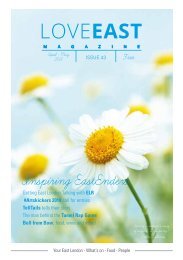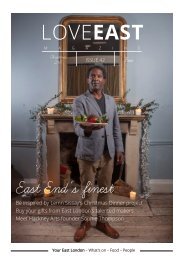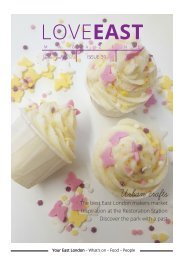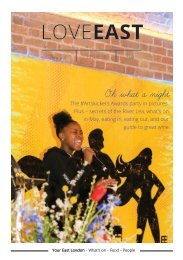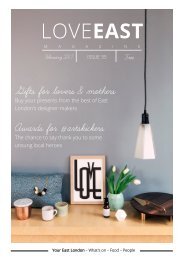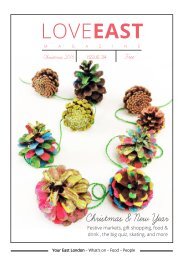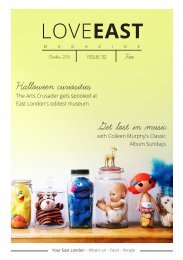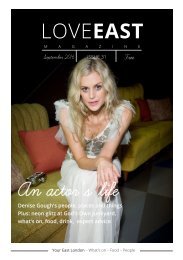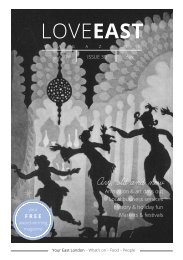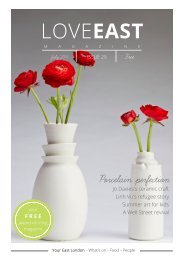Aug-Sep 2017
Create successful ePaper yourself
Turn your PDF publications into a flip-book with our unique Google optimized e-Paper software.
East End Vernacular<br />
Roland Collins<br />
Born in 1918, Roland<br />
Collins first came to the<br />
East End in the 1930s<br />
in the footsteps of<br />
James McNeill Whistler,<br />
drawing riverside<br />
scenes, returning after the<br />
war to paint the Hawksmoor<br />
churches. “I’ve always been interested in that<br />
area," he confided wistfully at 94, "I remember<br />
one of my first excursions to see the French<br />
Synagogue in Fournier Street.”<br />
A remarkable talent of modest demeanour,<br />
Collins was an artist who quietly followed his<br />
personal enthusiasms, especially in architecture<br />
and all aspects of London lore, creating a<br />
significant body of paintings while supporting<br />
himself as a designer throughout his working<br />
life. “I was designing everything,” he declared,<br />
searching his mind and seizing upon a random<br />
example, “I did record sleeves, I did the sleeve<br />
for Decca for the first long-playing record ever<br />
produced.”<br />
Copies of East End Vernacular, Artists who painted<br />
London’s East End Streets in the 20th Century can<br />
be pre-ordered from spitalfieldslife.com for £25.<br />
Reproduced courtesy of Museum of London<br />
Above: Snow in Rounton Road, Bow and ,<br />
Painting of Brushfield Street, Spitalfields,<br />
below, Old Houses, Bow, by Henry Silk<br />
by Roland Collins<br />
22 LOVEEAST




